Eilís Slattery
Uaim
- translation
prepositional pronoun ‘from me, need’
‘Seam, joining together, uniting’
Noun ‘alliteration’
The body of work that makes up this exhibition relates to repetition and seeing. It is an installation that integrates video, sculptural work and photographic material.
This work is an exploration of human life centred around family and how we connect and communicate. Family is treated as a central point to pivot from and return and centres on a belief that people or places will always be there for safe harbour and refuge. Refuge from the speed of contemporary life or our thoughts, family is always at the centre of the circle, with ripples extending outwards from this centre, we are similar but never the same.
The video consists of footage of 53 sets of eyes– each set of eyes in the video are connected through DNA to the artist. DNA is the most fundamental building block of replication and repetition. The eyes are a means of vision but also a means of non-verbal communication. They can express emotion that language is sometimes unable to voice. The sound for the video contains snippets of conversations that occurred during the videoing and parts of informal chat relating to the gathering of materials and hints at the limitations of language, which can be a poison and a remedy, both liberating and controlling.
The sculpture work, a circle of scissors, references connection and also the gaze.
Light is a circle; as it returns to the place, it begins. Both of the works are self-referential and circular. In the video work, this is explored through the artist's reflection in the 53 sets of eyes depicted. Each person looks at the same thing, but they have a different experience and memory of what they observed and sensed. What we gaze at and into is personal to each of us.
The photographic works are solar images made on found photographic paper. The photos aren’t fixed and have developed over approximately six weeks. The paper is light-sensitive, and the photos are unstable and keep developing. The photos depict the same scissors used in the sculptural work that has been rendered unusable. Their function broken, their movement restricted to a single position. They reflect the sculpture at a different moment in time.
The works also reference transformation, remaking and connection—the video acts to preserve a snapshot of a family and archives a series of moments. Video records and captures movement by breaking it down into a series of still images, freezing a specific moment that will never change or occur again.
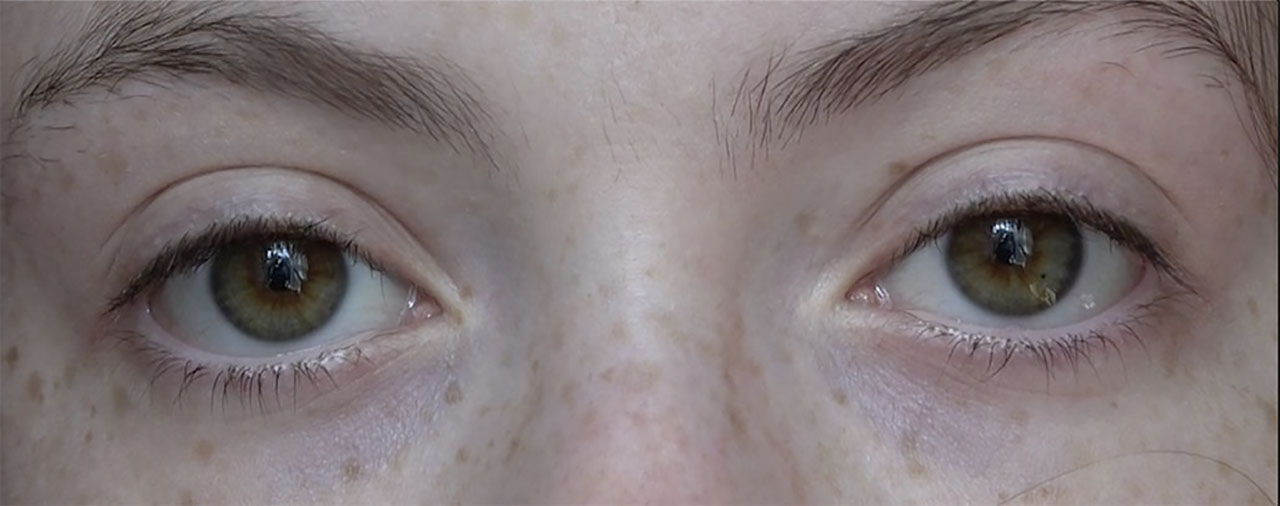
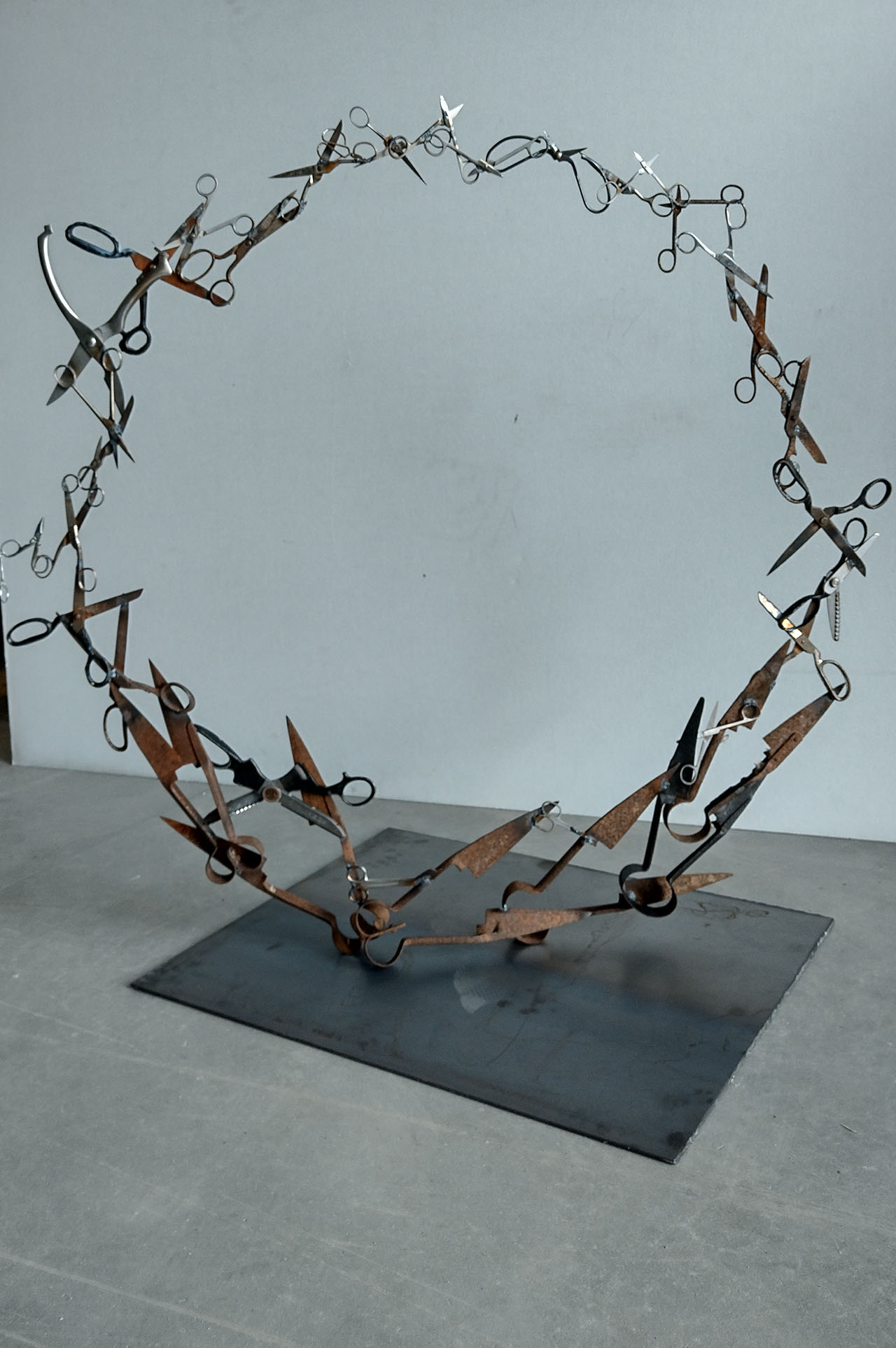

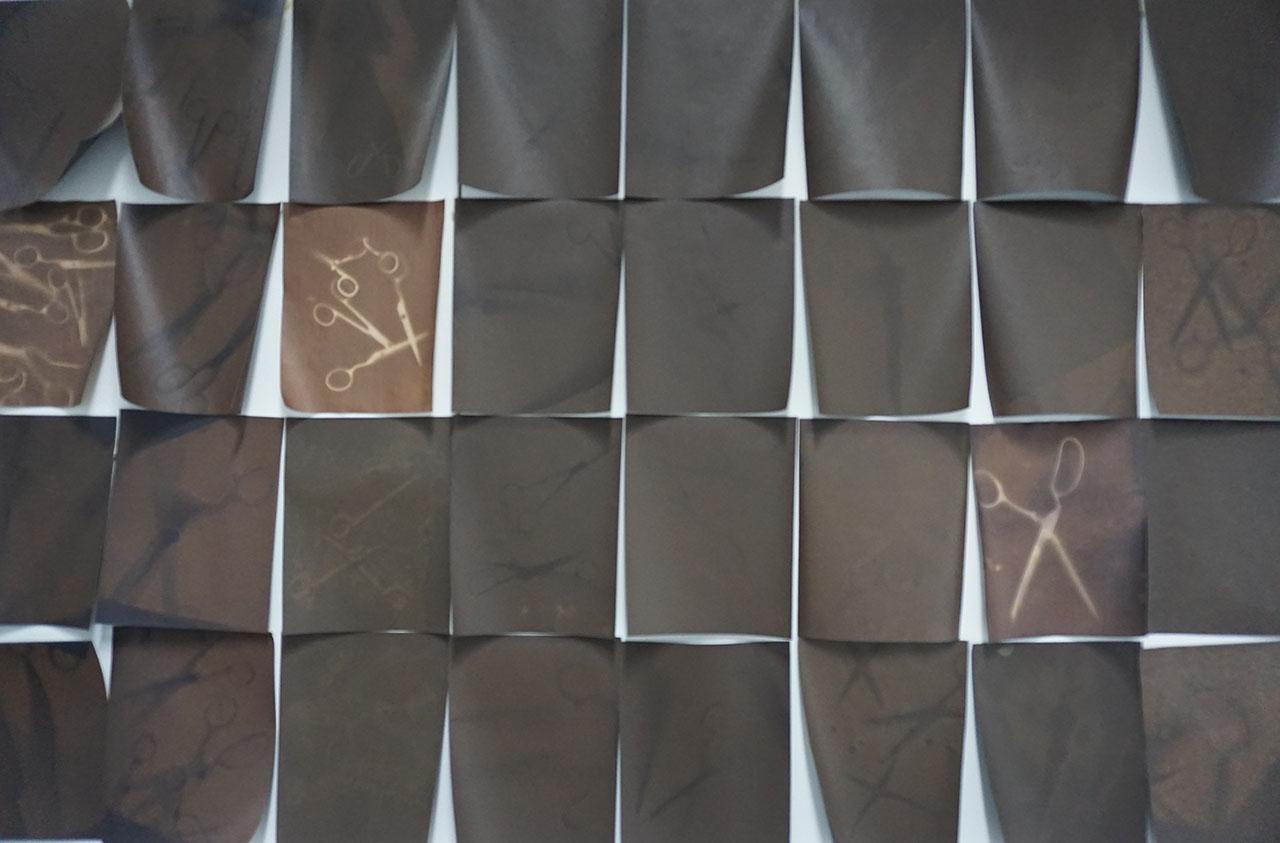
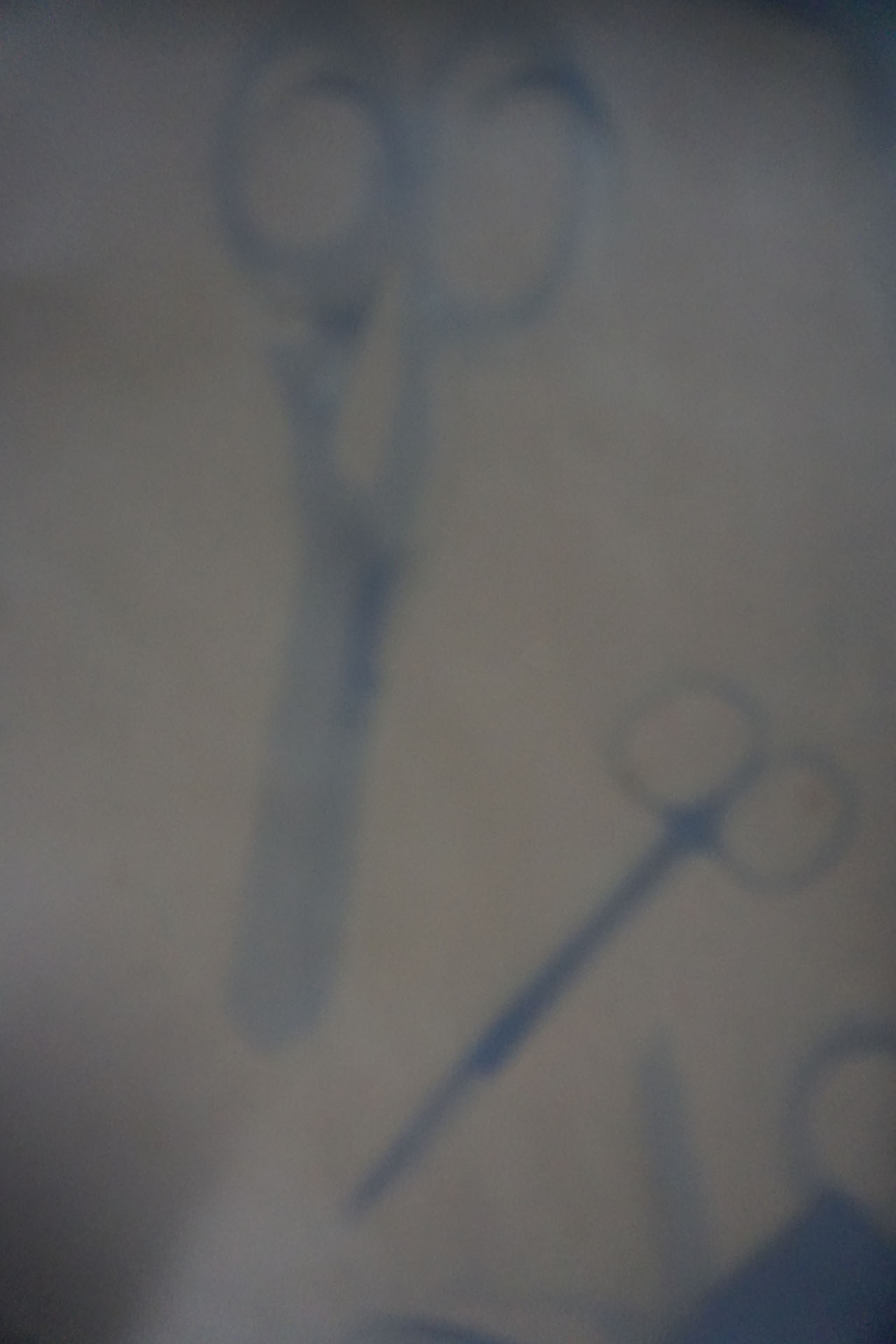
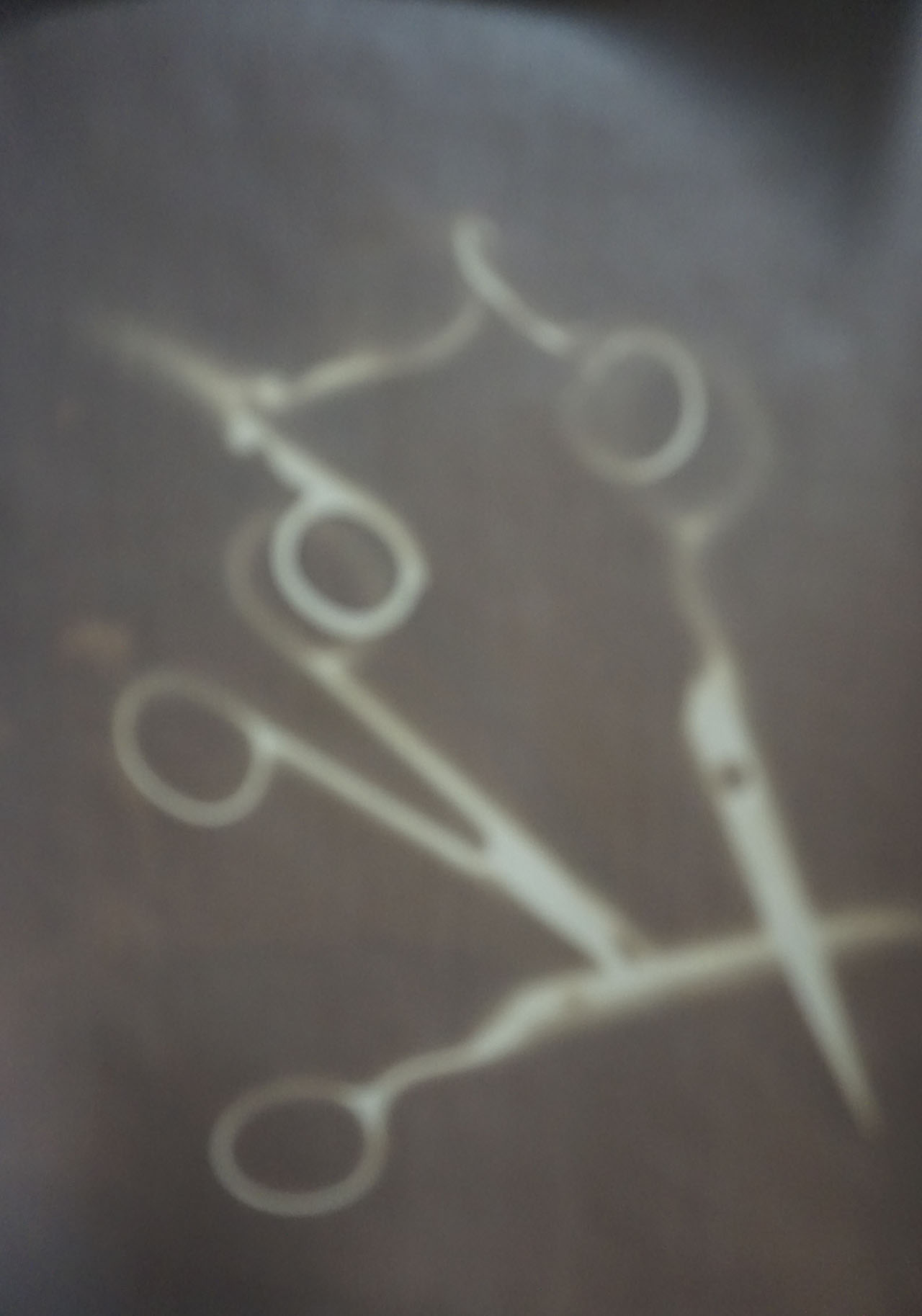
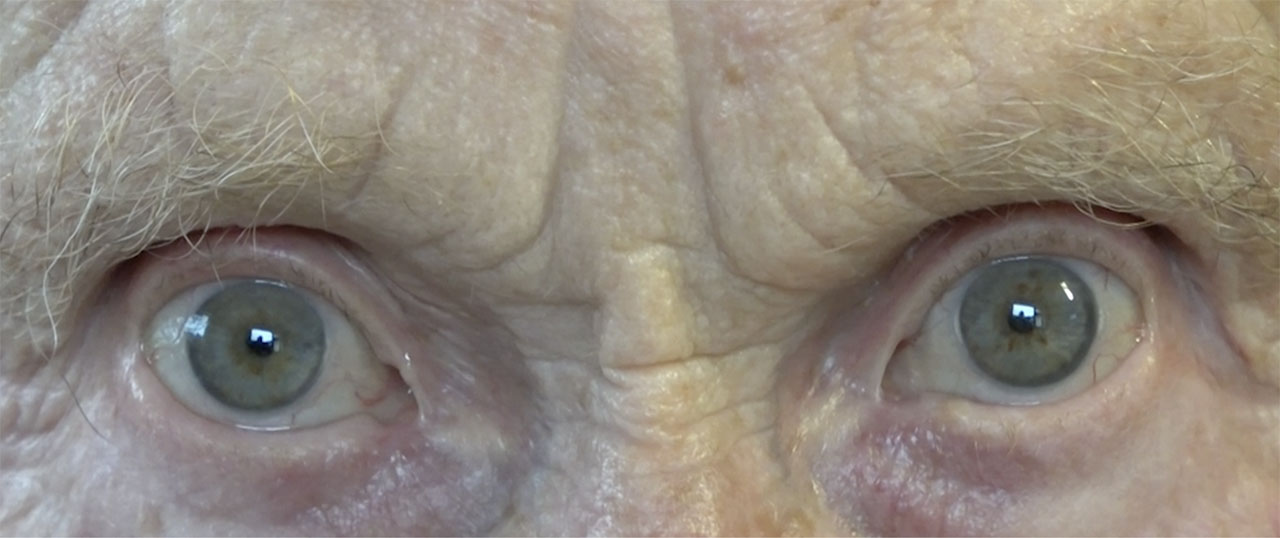
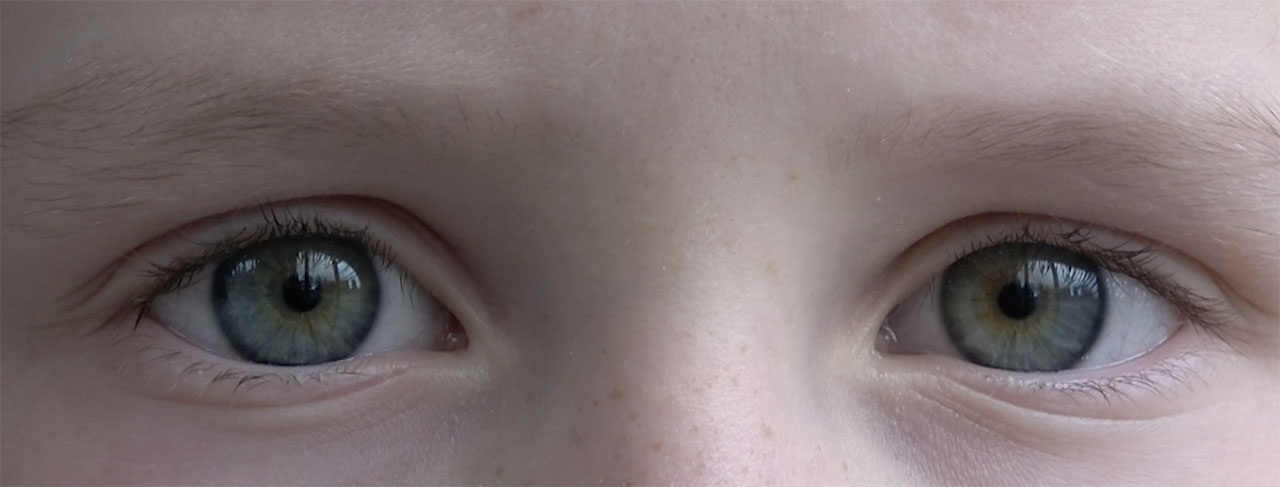
 Home
Information
Archive
Home
Information
Archive